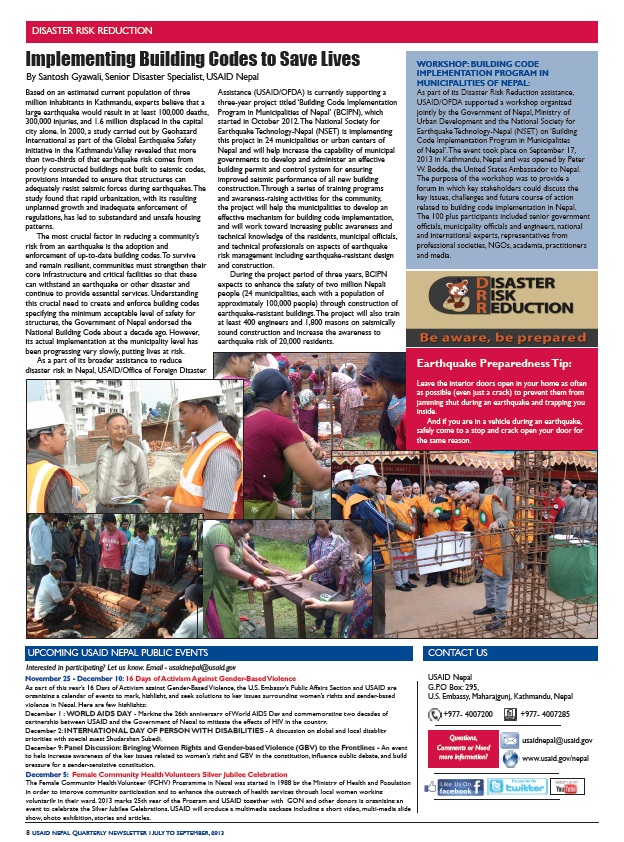Home » Implementing Building Codes to Save Lives
Speeches Shim
By Santosh Gyawali
Based on an estimated current population of three million inhabitants in Kathmandu, experts believe that a large earthquake would result in at least 100,000 deaths, 300,000 injuries, and 1.6 million displaced in the capital city alone. In 2000, a study carried out by Geohazard International as part of the Global Earthquake Safety initiative in the Kathmandu Valley revealed that more than two-thirds of that earthquake risk comes from poorly constructed buildings not built to seismic codes, provisions intended to ensure that structures can adequately resist seismic forces during earthquakes. The study found that rapid urbanization, with its resulting unplanned growth and inadequate enforcement of regulations, has led to substandard and unsafe housing patterns.
The most crucial factor in reducing a community’s risk from an earthquake is the adoption and enforcement of up-to-date building codes. To survive and remain resilient, communities must strengthen their core infrastructure and critical facilities so that these can withstand an earthquake or other disaster and continue to provide essential services. Understanding this crucial need to create and enforce building codes specifying the minimum acceptable level of safety for structures, the Government of Nepal endorsed the National Building Code about a decade ago. However, its actual implementation at the municipality level has been progressing very slowly, putting lives at risk.
As a part of its broader assistance to reduce disaster risk in Nepal, USAID/Office of Foreign Disaster Assistance (USAID/OFDA) is currently supporting a three-year project titled ‘Building Code Implementation Program in Municipalities of Nepal’ (BCIPN), which started in October 2012. The National Society for Earthquake Technology-Nepal (NSET) is implementing this project in 24 municipalities or urban centers of Nepal and will help increase the capability of municipal governments to develop and administer an effective building permit and control system for ensuring improved seismic performance of all new building construction. Through a series of training programs and awareness-raising activities for the community, the project will help the municipalities to develop an effective mechanism for building code implementation, and will work toward increasing public awareness and technical knowledge of the residents, municipal officials, and technical professionals on aspects of earthquake risk management including earthquake-resistant design and construction.
During the project period of three years, BCIPN expects to enhance the safety of two million Nepali people (24 municipalities, each with a population of approximately 100,000 people) through construction of earthquake-resistant buildings. The project will also train at least 400 engineers and 1,800 masons on seismically sound construction and increase the awareness to earthquake risk of 20,000 residents.
Date
Friday, November 22, 2013 - 5:15am


Comment
Make a general inquiry or suggest an improvement.